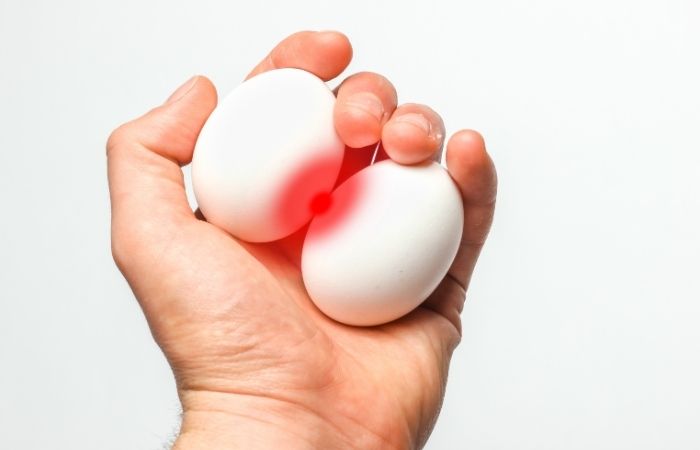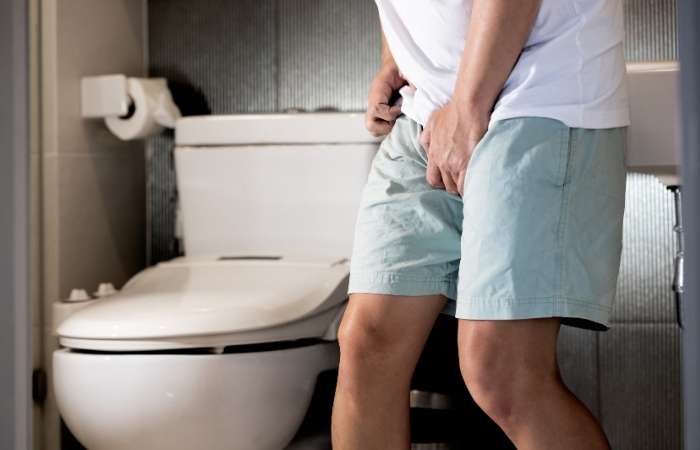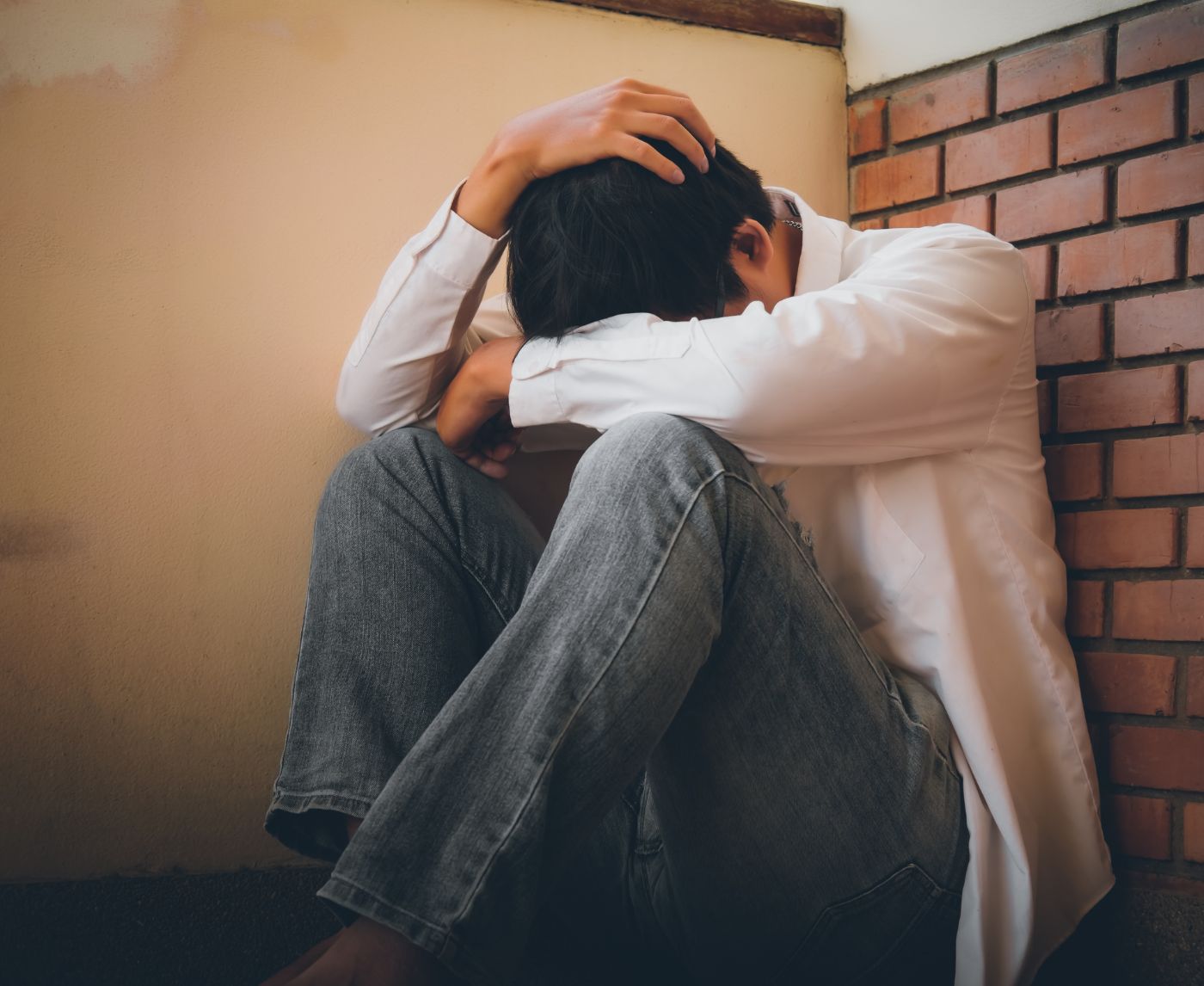Quick Answer: Yes, STDs like chlamydia and gonorrhea can cause testicular pain, especially if they lead to a condition called epididymitis, where the tubes behind the testicles become inflamed.
When Ball Pain Means More Than Blue Balls
Let’s get one thing out of the way: "blue balls" is real, but it’s not dangerous. It’s temporary, linked to arousal without ejaculation, and feels more like a dull ache or pressure that resolves on its own. But if you're feeling:
- Persistent pain that lasts more than an hour
- Swelling or redness of one or both testicles
- Burning pain when you pee
- Pain during or after sex
- Unusual discharge from the penis
…it could be something much more serious. Ball pain isn’t just discomfort, it’s often your body’s way of saying, “Yo, something’s up down here.”

People are also looking for: Caught Chlamydia Again? It Might Not Be Your Fault
The STD-Testicle Connection: What’s Actually Happening?
STDs like chlamydia, gonorrhea, and even trichomoniasis can travel through the urethra and cause inflammation in the testicles or the tube behind them (called the epididymis). This condition is called epididymitis, and it’s one of the most common STD complications in cis men under 35. How it happens:
- The bacteria enter the urethra during sex (vaginal, anal, or oral)
- They migrate to the epididymis or testicles
- The body reacts with swelling, pain, and possible fever
Common STD-linked causes of testicular pain:
- Chlamydia: Often silent at first, then hits with swelling, dull ache, and pain with urination
- Gonorrhea: Can cause more aggressive inflammation, fever, discharge, and sharp pain
- Trichomoniasis: Rare, but can cause urethral irritation that radiates to the testicles
If you’re sexually active and experiencing unexplained ball pain, don’t assume it’s nothing.
Testicle Pain from Chlamydia: A Sneaky Warning Sign
Chlamydia is known as a “silent” infection, especially in men. You might not notice anything until it’s already causing internal inflammation. Early symptoms of chlamydia-related testicular issues include:
- One-sided pain or heaviness
- A dull ache that comes and goes
- Mild scrotal swelling
- Discomfort when ejaculating
What makes this tricky is that there may be no discharge, fever, or burning, just weird ball pain. One Reddit user described it like this: “It felt like I’d been kicked, but in slow motion. Not sharp, just wrong.” Turns out? It was chlamydia. Caught early, it was treatable. Left longer? It could’ve impacted fertility.
Gonorrhea and the Gonads: What You Need to Know
Gonorrhea doesn’t just infect the urethra, it can cause more severe inflammation in the epididymis, testicles, and even the prostate. Compared to chlamydia, gonorrhea tends to show symptoms more aggressively, but not always. Gonorrhea-related testicle pain can come with:
- Yellow, green, or white penile discharge
- Sharp, stabbing pain in one testicle
- Fever or chills
- Pain while peeing or ejaculating
- Swelling that worsens quickly
If left untreated, gonorrhea can lead to infertility, chronic pain, and even a dangerous infection spreading into the bloodstream. And here's the scary part: Some men feel no pain at all until the infection is severe.
Check Your STD Status in Minutes
Test at Home with Remedium3-in-1 STD Test Kit

 For Men & Women
For Men & Women Results in Minutes
Results in Minutes No Lab Needed
No Lab Needed Private & Discreet
Private & DiscreetOrder Now $69.00 $147.00
For all 3 tests
STD or Torsion? Know the Difference
Testicular torsion is a medical emergency, it happens when the spermatic cord twists and cuts off blood supply to the testicle. You have less than 6 hours before permanent damage can occur.
How to tell the difference:
Testicular Torsion:
- Sudden, intense pain (usually one side)
- Scrotum may swell or appear elevated
- Nausea, vomiting
- Requires ER and surgery
STD or Epididymitis:
- Gradual onset of pain
- Might come with discharge or burning
- Swelling, but usually less severe
- Treatable with antibiotics
If you’re unsure, treat it like an emergency, don’t wait. It’s always better to be safe with your testicles.
How to Test for STD-Linked Testicle Pain
The good news? It’s easy to find out what’s going on, and you don’t have to go to a clinic if you’re not ready. You can test for chlamydia, gonorrhea, and trichomoniasis using at-home STD test kits that check your urine or a simple swab. Look for:
These kits are discreet and accurate and can get you results fast, so you can start treatment before things get worse.
What Treatment Looks Like (and Why You Shouldn’t Wait)
If your ball pain is caused by an STD, you’ll need antibiotics, usually:
- Chlamydia: Doxycycline for 7 days
- Gonorrhea: One dose of ceftriaxone injection + oral azithromycin or doxycycline
- Epididymitis: A combination of antibiotics depending on severity and bacteria involved
You’ll also need to:
- Abstain from sex for at least 7 days after treatment begins
- Tell any partners so they can get tested
- Use condoms going forward to prevent recurrence
Delaying treatment doesn’t just risk your testicles, it risks your fertility, your comfort, and your partner’s health too.
Misdiagnosed or Missed: Why Men Often Ignore Testicular Pain
Testicular pain is one of the most overlooked symptoms in men’s sexual health. Why? Because many guys either:
- Assume it’s “just blue balls” or a pulled muscle
- Don’t want to admit they’re scared
- Fear being judged at the doctor’s office
- Think STDs “don’t happen to them”
The result? Delayed care, worsened infections, and unnecessary suffering. One user on a men’s health forum wrote:
“I waited 10 days before getting it checked because I thought it was just from rough sex. Turns out it was epididymitis from gonorrhea. I wish I’d gone sooner.”
Testicle pain is nothing to be embarrassed about. It’s a medical issue, just like chest pain, a rash, or a broken ankle.

People are also looking for: STDs in Men: Symptoms Most Guys Miss
Stigma and Shame Delay Diagnosis
There’s a deep stigma around male pain, especially when it comes to testicles. Add STDs to that, and many men would rather suffer than speak up. Let’s be clear:
- You’re not “dirty” for getting an STD
- You're not weak for asking for help
- Your health matters, so does your pleasure
Delaying care because of fear or shame only gives infections more time to do damage. Instead, let’s normalize:
- Routine STD testing for sexually active people
- Partner conversations about symptoms and past exposure
- Seeking help when something hurts, especially your balls
How to Prevent STD-Linked Testicle Pain in the Future
Testicular pain caused by STDs is preventable, and preventable doesn’t have to mean boring. It just means smarter sex. Here’s how:
- Use condoms for vaginal, anal, and oral sex
- Get tested every 3–6 months if you're sexually active with new or multiple partners
- Test together with partners before skipping protection
- Listen to your body, pain, swelling, and burning are signs
And remember: Not all infections cause obvious symptoms. That’s why regular testing is just as important as brushing your teeth; it’s maintenance, not judgment.
Sex-Positive Care Means Taking Your Pain Seriously
You can care about pleasure and still take health seriously. Getting tested, asking questions, and responding to symptoms like testicular pain are acts of care, not fear. If you’re dealing with pain:
- Don’t self-diagnose off forums alone
- Don’t wait until it “really hurts”
- Don’t let embarrassment keep you from peace of mind
A quick test can tell you what’s going on. And if it’s nothing? Great. But if it is something, you’ve just saved yourself a lot of future stress.
Check Your STD Status in Minutes
Test at Home with Remedium3-in-1 STD Test Kit

 For Men & Women
For Men & Women Results in Minutes
Results in Minutes No Lab Needed
No Lab Needed Private & Discreet
Private & DiscreetOrder Now $69.00 $147.00
For all 3 tests
“Is This Normal?” and Other Lies We Tell Our Balls
You know that moment, you feel a weird ache, a tug, or a sharp sting in your testicles and immediately think:
- “Probably just slept weird.”
- “Maybe it’s from the gym.”
- “Blue balls, again?”
Then you wait. And the pain stays. Or gets worse. And suddenly you’re Googling “ball cancer” at 2AM.
Here’s the thing: your balls are not being dramatic. They’re trying to get your attention. And if you’re sexually active, especially without consistent condom use, that ache could be more than muscle strain, it could be a message from an STD like chlamydia or gonorrhea. So let’s call time on the self-gaslighting. If you had chest pain, you wouldn’t “wait it out.” Why treat your testicles like second-class citizens? Here’s your new mantra:
- If it burns, swells, or throbs, test it.
- If it aches and you’ve had recent sex, test it.
- If it feels off and you’re Googling this at night, definitely test it.
Silence doesn't mean strength; it means suffering in slow motion. And that’s not sexy, brave, or necessary. Whether it’s nothing or something, knowing is power. And your balls deserve nothing less.

People are also looking for... How to Talk to Your Partner After a Surprise Positive Chlamydia Test (Again)
FAQs
1. Can STDs really cause testicular pain?
Yes, chlamydia and gonorrhea can inflame the epididymis and testicles, causing pain, swelling, and tenderness.
2. What does STD-related ball pain feel like?
It’s usually a dull ache or one-sided pain that worsens over time. It may be accompanied by discharge or discomfort during urination.
3. How long can I wait before seeing a doctor?
If the pain lasts more than 24 hours, gets worse, or comes with swelling or fever, see a doctor or test immediately.
4. Is it dangerous to ignore testicle pain?
Yes. Untreated infections can cause infertility, chronic pain, or more serious complications.
5. How is STD-related testicle pain treated?
With antibiotics targeting the underlying infection. Pain usually resolves within days of starting treatment.
6. Can I treat testicle pain at home?
You can manage discomfort with cold packs and OTC meds, but you still need testing and antibiotics for the root cause.
7. Do condoms prevent this?
Yes, consistent condom use significantly lowers the risk of contracting STDs that cause testicular pain.
8. Can testicle pain mean cancer?
While rare, testicular pain can be a symptom. Any persistent or unexplained pain should be checked by a doctor.
9. What if I have no other symptoms, just pain?
You could still have an STD. Many infections show no symptoms except testicular discomfort or swelling.
10. Should I stop having sex if my balls hurt?
Yes, pause sexual activity until you know what’s causing the pain and complete any treatment if prescribed.
Protect Yourself
Your balls aren’t just baggage, they’re vital, sensitive, and worth protecting. If they’re hurting, your body’s talking. Whether it’s chlamydia, gonorrhea, or something less common, testicular pain is a signal, not a joke. And the good news? You don’t have to guess. You can test discreetly, treat effectively, and move on confidently. Because being sex-positive includes being health-aware. And taking care of your balls is a damn good place to start.
Got pain and no answers? Order an at-home STD test kit today, and take back control of your health.
Sources
1. Mayo Clinic – Epididymitis: Causes include STIs like chlamydia and gonorrhea
2. CDC – STI Treatment Guidelines: Epididymitis and orchitis
3. PMC (NCBI) – Gonorrhea and chlamydia often cause acute scrotal pain (epididymo-orchitis)










